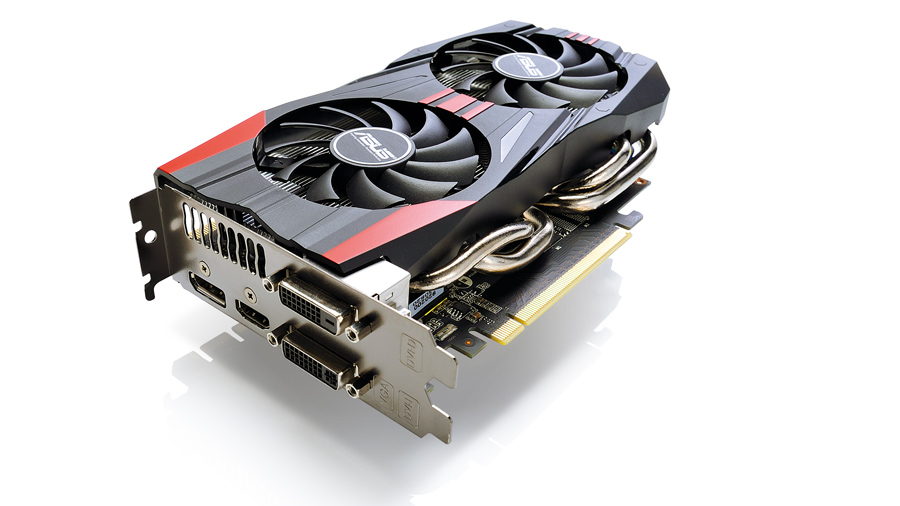TechRadar Verdict
Pros
- +
Small form factor
- +
Good cooling solution
- +
Cheaper and quicker than HD 7950
Cons
- -
GK104 chip is at its limit
Why you can trust TechRadar
In spring this year, we reviewed Asus's miniature take on the GTX 670. It was the first of the cards based on that GPU to take advantage of the shortened PCB of the reference edition, and despite its crazy price premium it was a decent wee card.
The GTX 760 is plainly not so mini, but it does both share a good deal of the same silicon DNA (although thankfully not the same pricing). The standard GTX 760 has breathed life into Nvidia's mid-range GPU stack.
For the most part this newer card is at least on par with the GTX 670, but (more importantly for Nvidia) it's quicker than the competing Radeon HD 7950 from AMD.
The combination of out-performing and ultimately undercutting the opposition has put the GTX 760 on the map, and we checked out EVGA's Superclocked version last month. This more diminutive version from Asus is still overclocked, and is an even more tantalising thought.
Gene splicing
Like the GTX 670 Mini, Asus's GTX 760 is running with the cut-down PCB of the reference card, but instead of hobbling the cooling solution, it's given it the full DirectCU II treatment.
That does mean the heatsink sticks out the back of the PCB a touch, although actually that just adds a little GTi flavour to the mix. It's a bit longer too, but will still happily fit inside many mini-ITX cases, like the Lian-Li PC-Q30.
It's got a decent overclock too, boosted up over the 1GHz mark from a base of 980MHz. However, thanks to the new implementation of GPU Boost 2.0, it's rare that you'll find the clocks going that low in-game. We saw the GK104 GPU prancing along at 1,163MHz, and a good chunk of that extra clockspeed can be traced to the impressive Direct CU II cooling array.
It manages to drop the 100 per cent loaded temperature of the chip down to 69ºC from the 81ºC of the reference card. That's a couple degrees cooler than the new ACX cooler that EVGA used for its Superclocked GTX 760.
Benchmarks
DirectX 11 tessellation performance
Heaven 4.0: Frames per second: Higher is better
ASUS GTX 760 DCU II: 20.3
EVGA GTX 760 SC: 20.6
AMD HD 7950: 18.2
DirectX 11 gaming performance
BioShock Infinite: Frames per second: Higher is better
ASUS GTX 760 DCU II: 39
EVGA GTX 760 SC: 40
AMD HD 7950: 32
Crysis 3: Frames per second: Higher is better
ASUS GTX 760 DCU II: 23
EVGA GTX 760 SC: 24
AMD HD 7950: 21
Verdict
In actual performance terms, little has changed. The fact that the high clockspeed barely translates into any actual fps performance gains is indicative of a second round of cards based on the same silicon. This GK104 is running at its limits in terms of the geometry it can toss about, so neither overclocked card is really worth it for any perceived improvements in overall performance.
But when the card is already performing this well that's not such a problem - and as Asus's card is only a little more expensive, you're simply getting a smaller card with a much more impressive cooling array in return.
In fact, the DirectCU II cooler is noticeably quieter in operation, too. Even if space isn't at a premium, this smaller GTX 760 still gets the nod from us.

With the Black Friday phones deals in full swing, should you wait for the Galaxy S25?

ICYMI: the week's 7 biggest tech stories from Casio's smart ring watch to YouTube’s Spotify Wrapped

MIT researchers say nanoscale 3D transistors made from ultrathin semiconductor materials promise more efficient electronics; quantum mechanics offers a path beyond silicon limits
